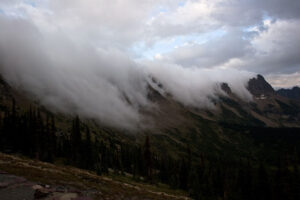The sources and meditation instructions below are a small selection from a larger source sheet on Not-knowing, Joy and Purim, from the AJS Kabbalah Through the Calendar course, where we explore this subject in depth. To obtain the full source sheet with audio and video recordings of the the accompanying class, at no cost, please click here and write “Not-knowing” as your message.
In Judaism too, we find this tension. The great esteem our tradition has placed on knowledge and learning is balanced by our obligation to cultivate our own relationship with not-knowing. The most famous example of this is in the following talmudic teaching, where we learn of a controversial practice for the holiday of Purim. Why do you think Rava’s teaching has proved so contentious, and yet so enduring? What is the deeper meaning of the practice he is pointing us toward?
TOGGLE COLUMNS (on/off):ADJUST COLUMN POSITIONS: select the column header cell and drag it where you want. show me!COPY INDIVIDUAL COLUMN(S): use CopyTables, a browser extension.
אמר רבא
מיחייב איניש
לבסומי בפוריא
עד דלא ידע
בין ארור המן
לברוך מרדכי
Rava taught
that a person is obligated
to become intoxicated on Purim
until they do not know
the difference between ‘Cursed is Haman’
and ‘Blessed is Mordekhai.’
What is Haman missing, according to the teaching below, and why do you think he missed it, despite his thorough preparations? How might this one little fact affect the outcome of his plans?
TOGGLE COLUMNS (on/off):ADJUST COLUMN POSITIONS: select the column header cell and drag it where you want. show me!COPY INDIVIDUAL COLUMN(S): use CopyTables, a browser extension.
כיון שנפל פור בחדש אדר שמח
שמחה גדולה
אמר נפל לי פור בירח שמת בו משה
ולא היה יודע שבשבעה באדר מת
ובשבעה באדר נולד
When the lot fell on Adar,
Haman rejoiced greatly,
for he said: “The lot has fallen on the month that Mosheh died!”
And he did not know that on the 7th of Adar, Mosheh died,
and on the 7th of Adar he was born.
From teachings such as the one below, we can see why the rabbinic opponents of Ḥasidism, who valued talmudic learning for its own sake, were quick to label Ḥasidism a heretical and dangerous movement. What is R’ Menachem teaching us here about the difference between knowledge and wisdom? What is the spiritual practice that his words might lead us to explore?
TOGGLE COLUMNS (on/off):ADJUST COLUMN POSITIONS: select the column header cell and drag it where you want. show me!COPY INDIVIDUAL COLUMN(S): use CopyTables, a browser extension.
ואחר שלומד כל התורה
אז הוא יודע ומבין
שאינו יודע כלום
כי תכלית הידיעה
שאינו יודע
After a person learns all the Torah,
then they know and understand
that they do not know anything,
for the goal of knowledge
is not-knowing.
Practice Instructions for Cultivating a State of Not-knowing
- Decide how long you want to practice for. If you’re new to meditation, try ten minutes.
When you feel ready, gradually increase the practice time by five minutes at a time.
Twenty minutes is a good sit for an intermediate practitioner, whereas more advanced meditators might practice for 45-60 minutes. - Sit quietly in a comfortable position, with the spine upright, and the body balanced between relaxation and alertness.
(Lying down is also possible, but brings with it the possibility of falling asleep). - Close your eyes and let out a few yawns or sighs to relax your body.
- Now just sit, not trying to change or do anything.
Observe whatever arises in your body and mind – thoughts, feelings, whatever comes.
- After a minute or two, set your intention to bring your attention or awareness to a specific place in the body that will be your anchor or object for this practice.
If you are new to this,
then you may want to use the soles of the feet,
the backside and its contact with the chair/cushion,
or any other relatively neutral place in the body.If you already have a meditation practice, please use whatever anchor works best for you at this time.
- Whatever thoughts, feelings or sensations arise, try to notice them,
gently release them without judgement, and keep returning to your anchor.This may or not be easy in this moment, but the key thing is the effort.
Keep trying to bring your attention, focus and curiosity gently back to the anchor that you have chosen.
- After a few minutes, we are a little more settled and ready to introduce the work of cultivating not-knowing.
Whatever thoughts, feelings or sensations arise,
notice them and welcome them with a gentle greeting
such as, “What a mystery!”
or perhaps, “Maybe, maybe not”
or, “I have no idea what that is or where it comes from”
or even, “Could be, I don’t know for sure.”Use whichever formula works best for you.
Trust your intuition and keep it simple – don’t get lost in thought about which words to use.
Maintain some focus on your anchor to help you remain in a meditative state.
Keep doing this diligently to whatever the mind presents, no matter what it is, for the duration of your practice, and notice what happens. - When you have completed the practice, take a moment to check in with yourself.
What is happening inside you?
Is there anything you would like to express or record for yourself?
Source(s)
Click to access Sources-and-Meditation-Instructions-for-Not-knowing-on-Purim-AJS-2021.pdf
Notes
| 1 | Henry David Thoreau, Journal, 20 November 1850 — Fair Haven Pond. |
|---|

“עד דלא ידע | Sources and Meditation Instructions for Not-knowing on Purim, by Rabbi Daniel Raphael Silverstein (Applied Jewish Spirituality 2021)” is shared through the Open Siddur Project with a Creative Commons Attribution-ShareAlike 4.0 International copyleft license.



Comments, Corrections, and Queries